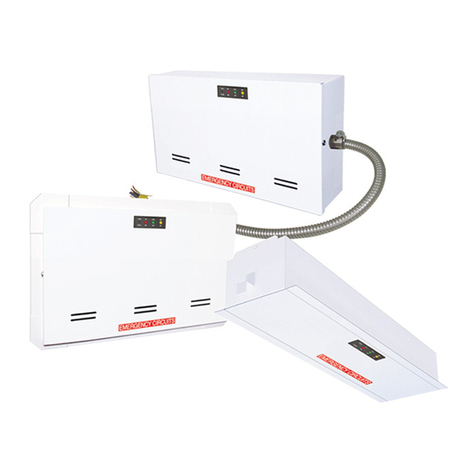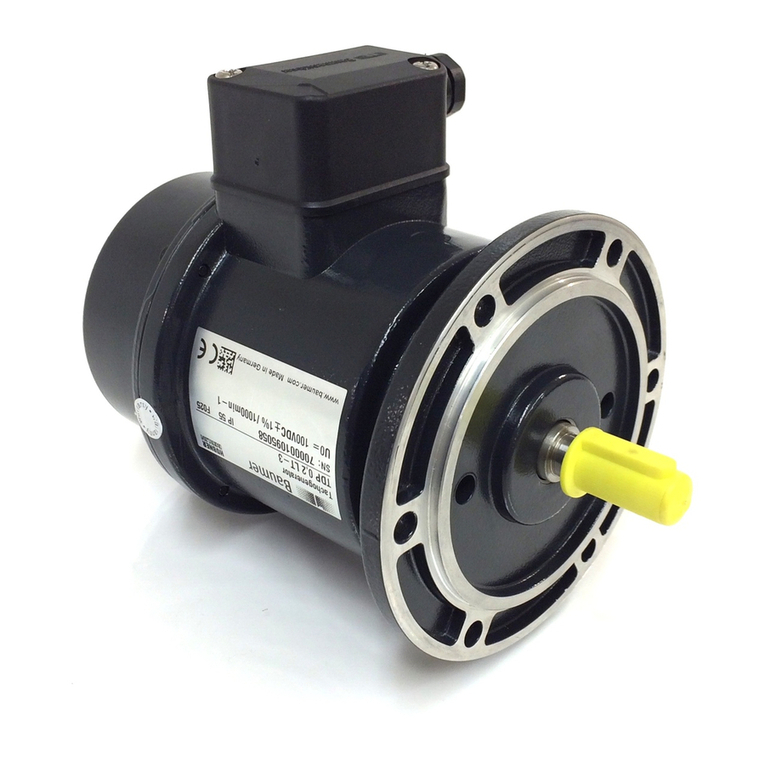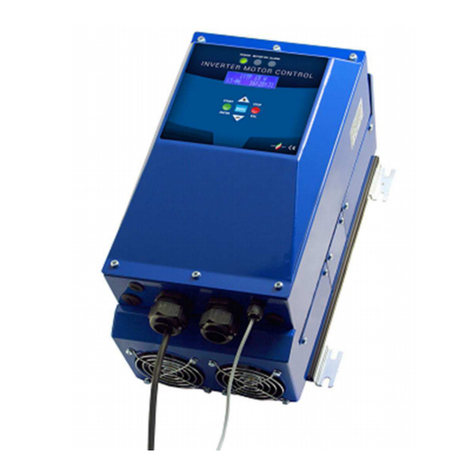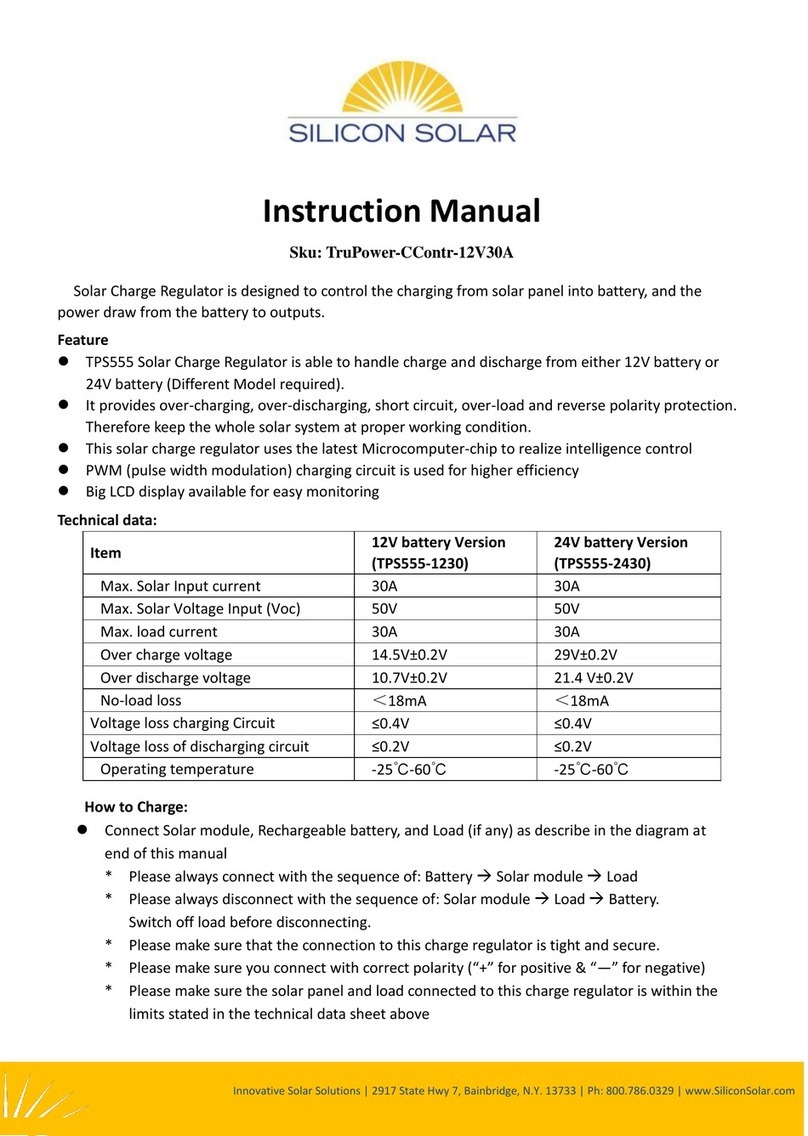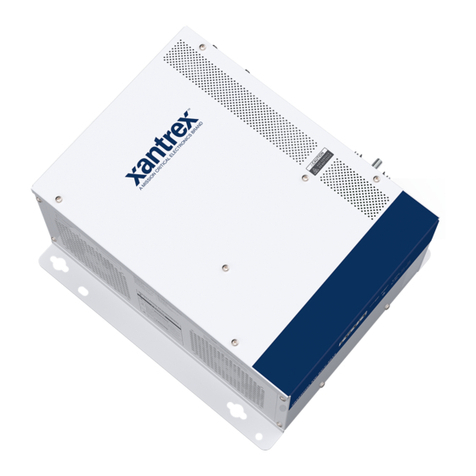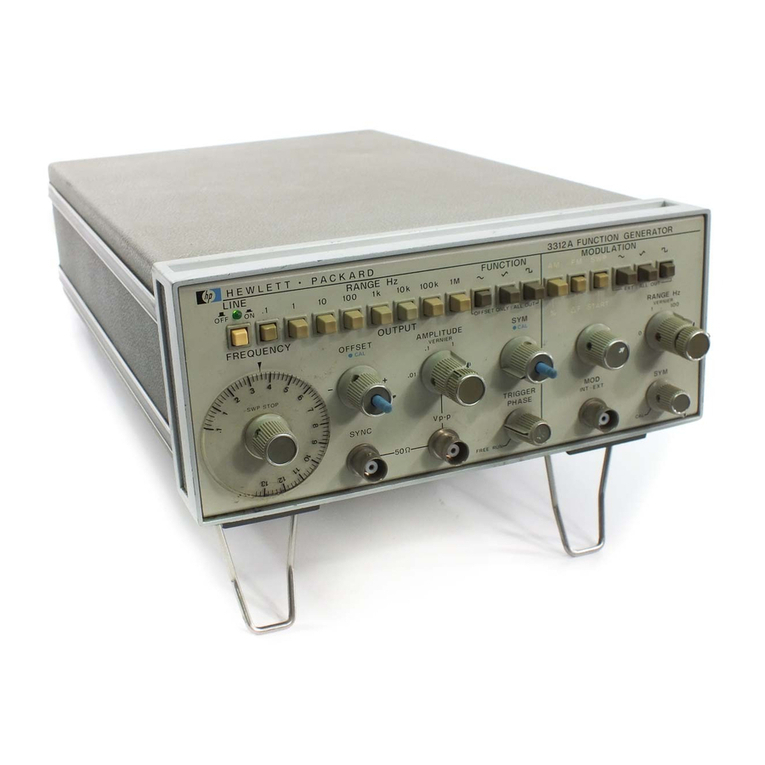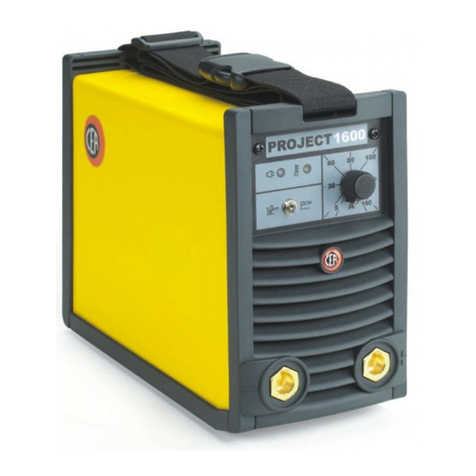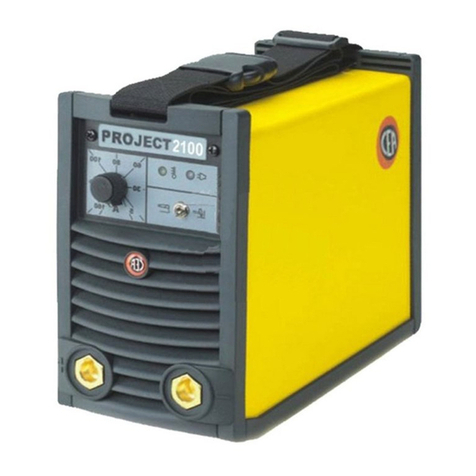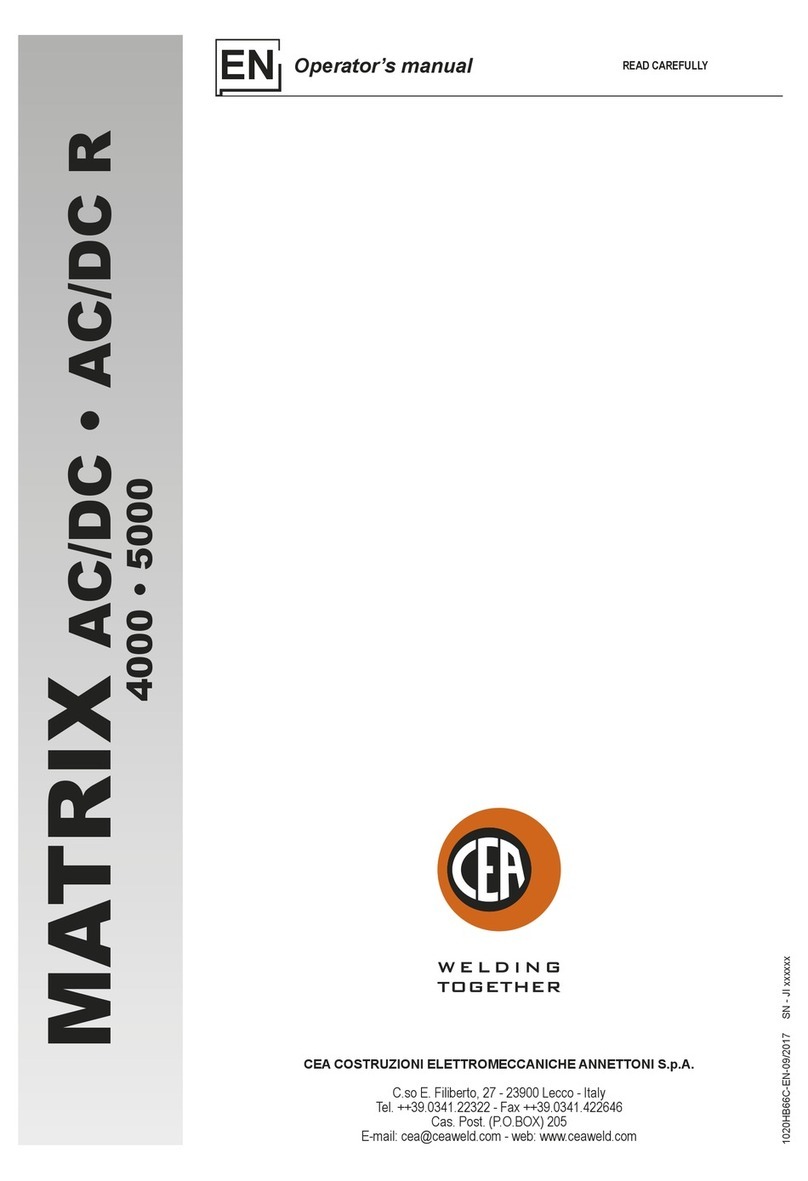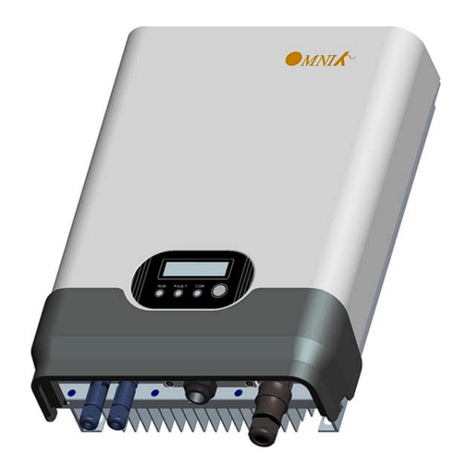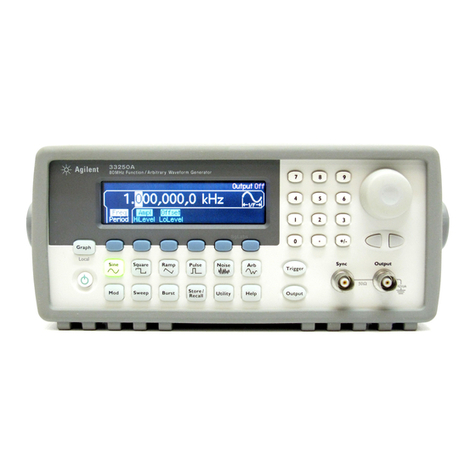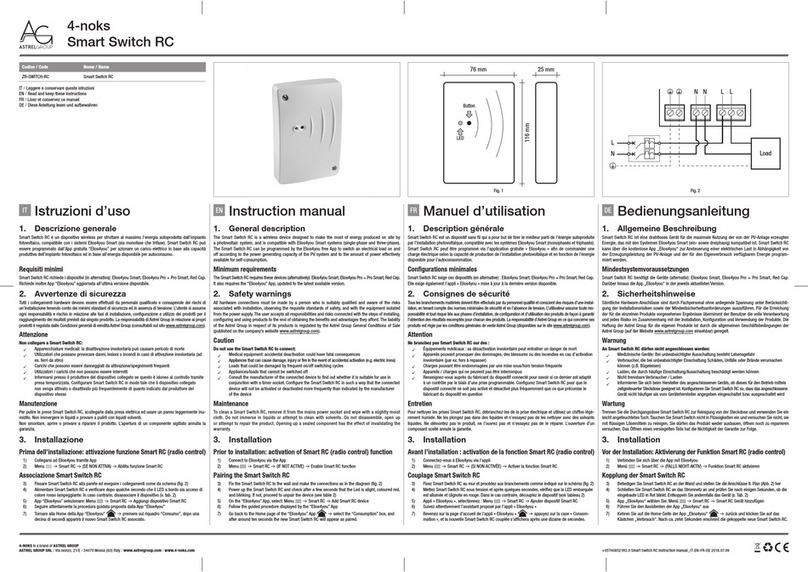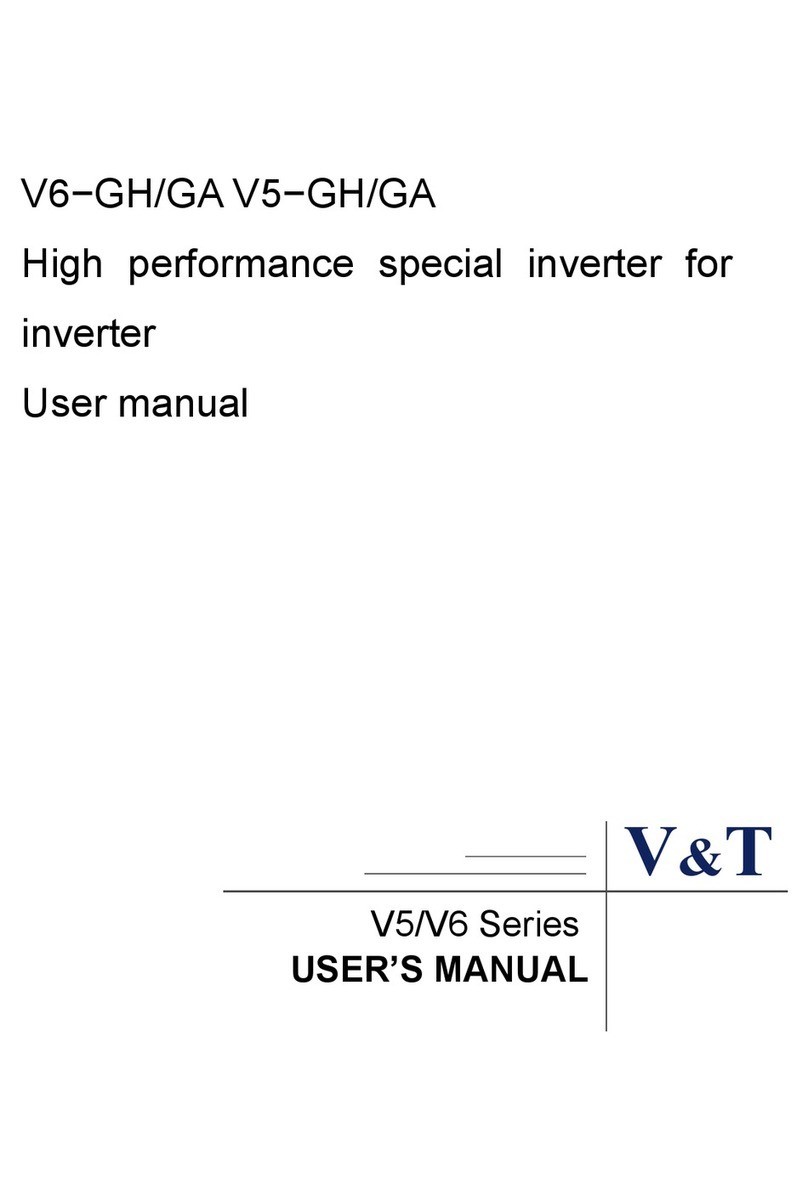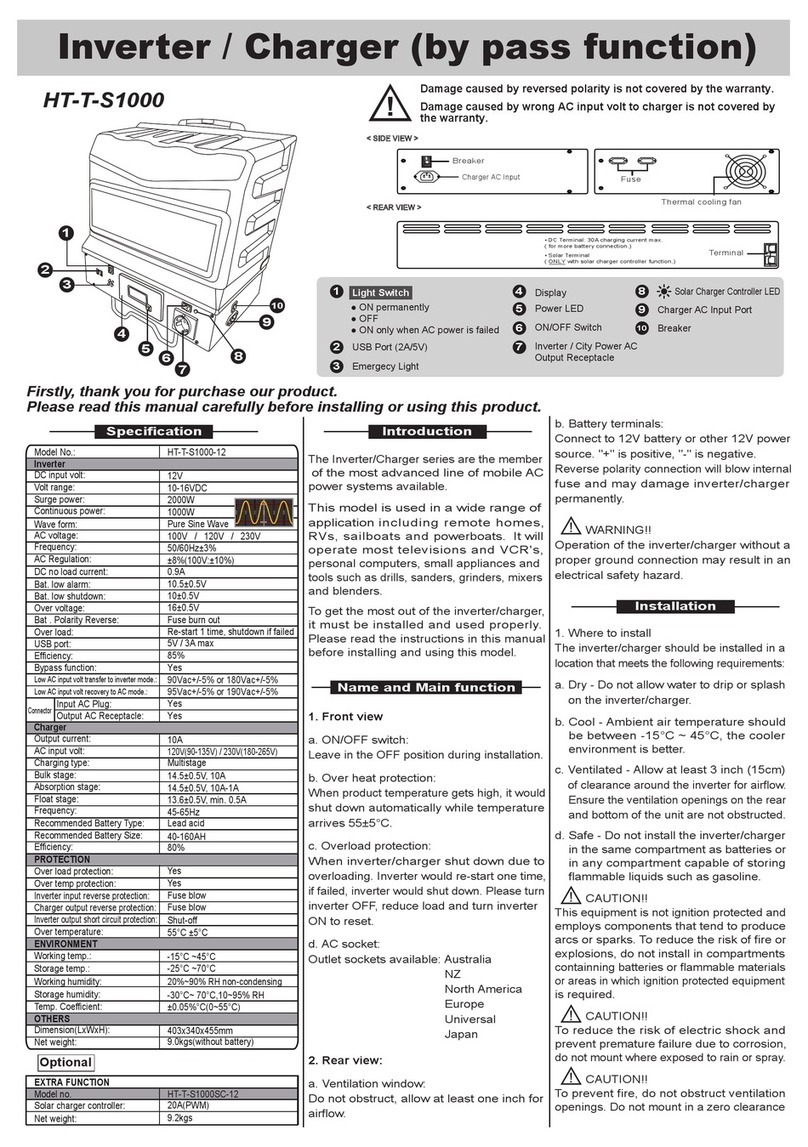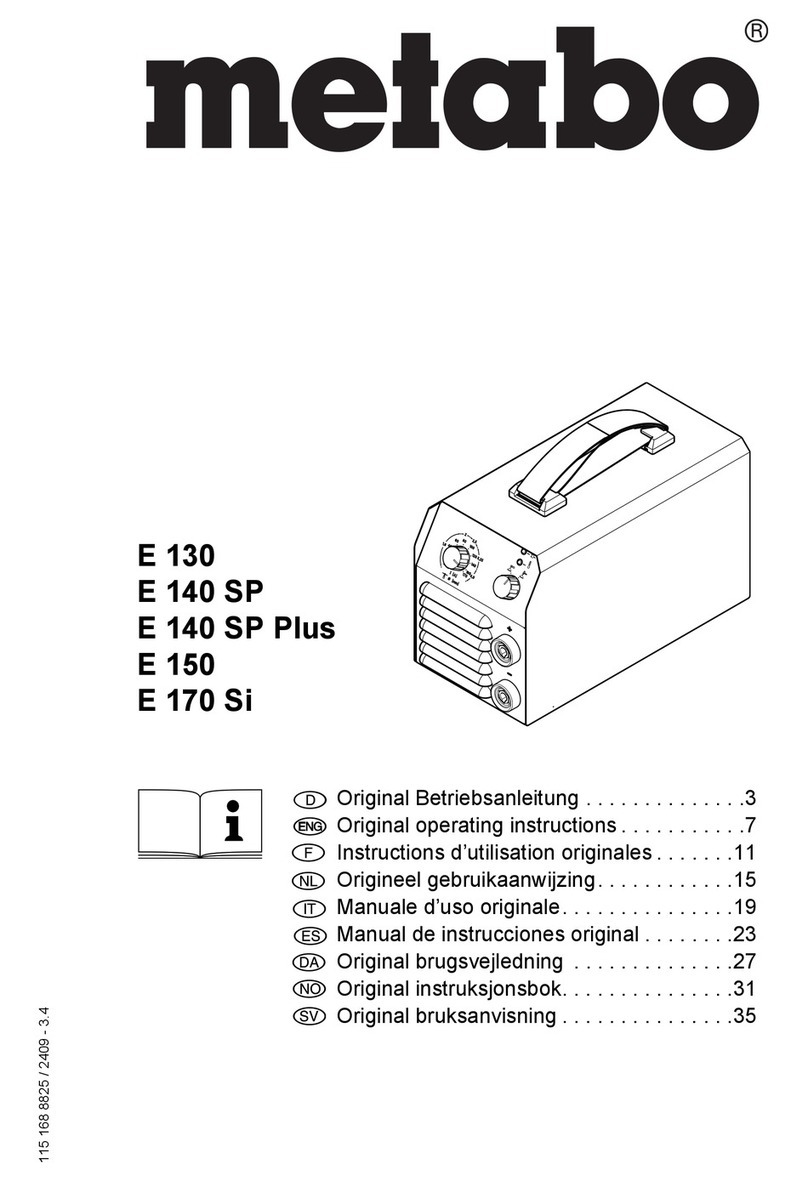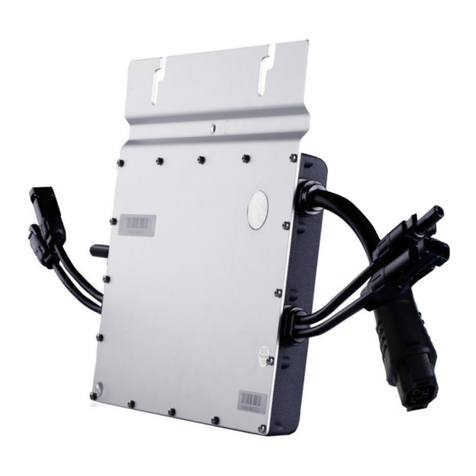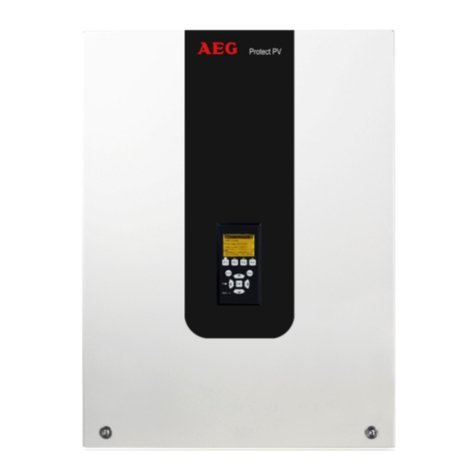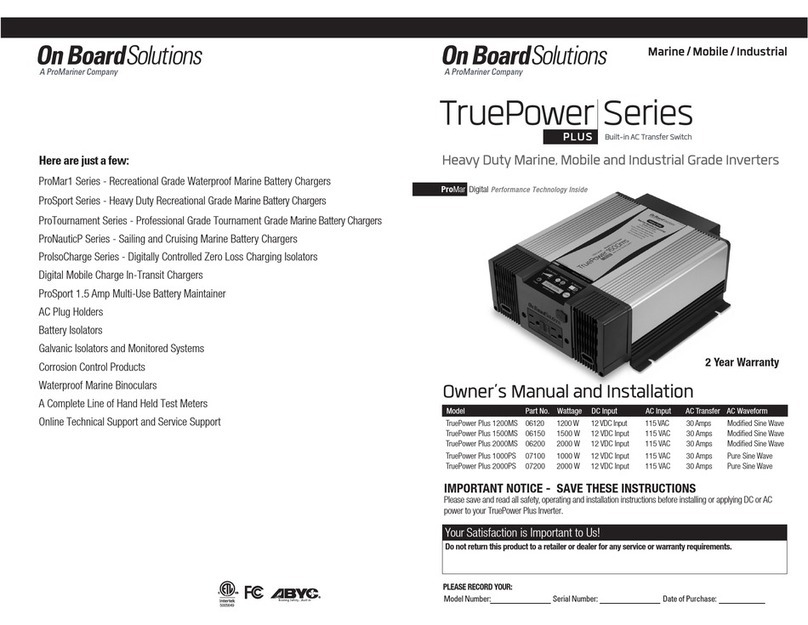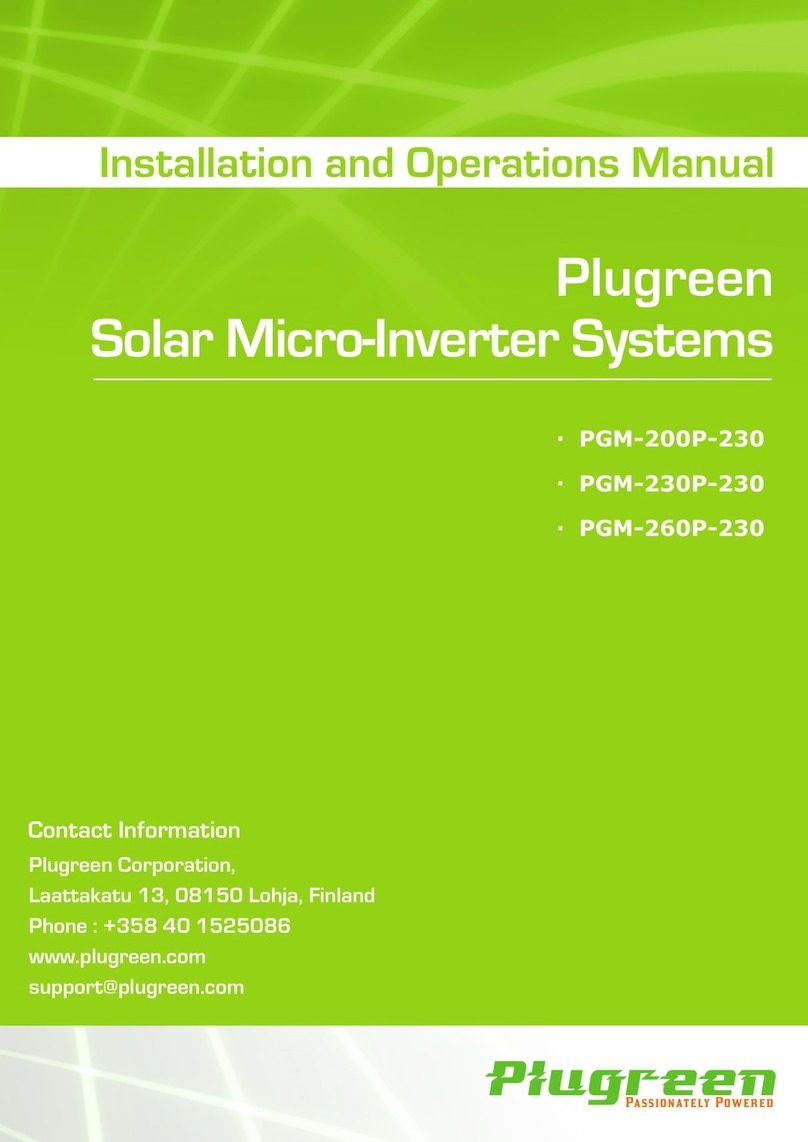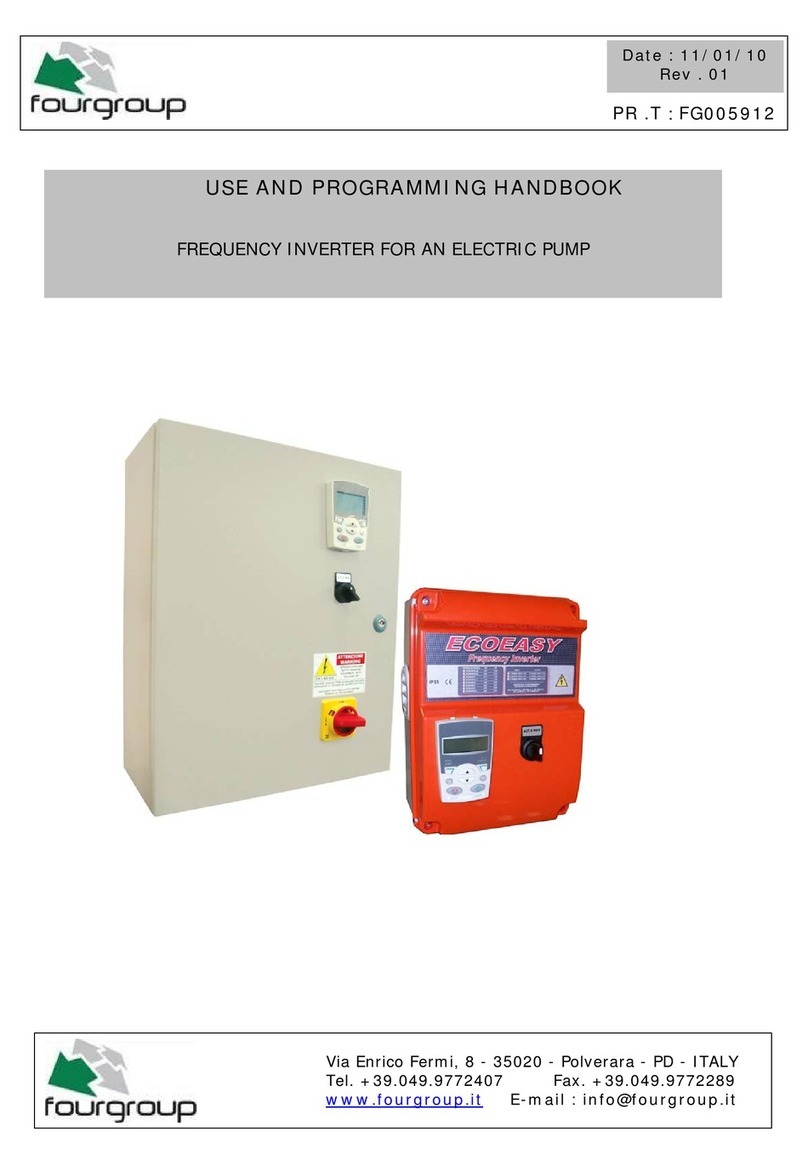
4
• Tenere un estintore nelle vicinanze del
posto di lavoro.
• Non usare mai ossigeno in una torcia
di saldatura ma soltanto gas inerti o
miscele di questi.
RISCHI DOVUTI A CAMPI
ELETTROMAGNETICI
• Il campo magnetico
generato dalla mac-
china può risultare peri-
coloso a persone porta-
trici di pace-maker, pro-
tesi auricolari e appa-
recchiature similari, tali persone
devono consultare il proprio medico
prima di avvicinarsi ad una macchina
in funzione.
• Non avvicinarsi alla macchina in fun-
zione con orologi, supporti magnetici
per dati, timer, ecc. Questi oggetti
potrebbero subire danni irreparabili a
causa del campo magnetico.
• Questo impianto è conforme ai requi-
siti di protezione fissati dalle direttive
89/336 CEE, 92/31 CEE e 93/68 CEE
in materia di compatibilità elettroma-
gnetica (EMC). In particolare è con-
forme alle prescrizioni tecniche della
norma EN 50199 ed è previsto per
essere utilizzato in tutti gli ambienti
industriali e non in quelli per uso
domestico. Qualora disturbi elettroma-
gnetici dovessero presentarsi è
responsabilità dell’utilizzatore risol-
vere la situazione con l’assistenza tec-
nica del costruttore. In alcuni casi
come rimedio è necessario schermare
la saldatrice ed inserire, sulla linea di
alimentazione, opportuni filtri.
MATERIALI E SMALTIMENTO
• Queste macchine sono
costruite con materiali
privi di sostanze tossi-
che e nocive per l’ope-
ratore.
• Durante la fase di smal-
timento è opportuno smontare la
macchina e separarne i componenti in
base al tipo di materiale.
MANIPOLAZIONE E STOCCAGGIO
DEI GAS
Precauzioni devono
essere prese per una
sicura manipolazione dei
gas compressi in bom-
bole. Innanzitutto queste
devono essere tenute lon-
tane da cavi portacorrente o altri circuiti
elettrici. Consigliamo di usare bombole
che riportino marcato il tipo di gas conte-
nuto, non fate affidamento sulla identifi-
cazione a mezzo colori.
• Richiudete le valvole ogni volta in cui
non state operando e quando la bom-
bola è vuota restituitela prontamente.
• Assicurate la collocazione delle bom-
bole contro urti e cadute accidentali.
• Non cercate di riempirle.
• Usate solamente tubi e raccordi certifi-
cati, ognuno per il tipo di gas che
dovete impiegare e, se danneggiati,
sostituiteli.
• Usate un corretto regolatore di pres-
sione, montatelo sulla bombola
manualmente e in caso di sospetto
malfunzionamento, sostituitelo o ripa-
ratelo prontamente.
• Aprite lentamente la valvola della
bombola, cosicché la pressione del
regolatore aumenti lentamente.
• Quando l’indice misuratore è pressu-
rizzato, lasciate la valvola nella posi-
zione raggiunta.
• Per gas inerti aprite completamente la
valvola.
• Per gas combustibili, aprite la valvola
per meno di un giro, cosicché possa
essere chiusa velocemente in caso di
emergenza.
Installazione
Il luogo di installazione dell’impianto
deve essere scelto con cura, in modo da
assicurare un servizio soddisfacente e
sicuro. L’utilizzatore è responsabile
dell’installazione e dell’uso dell’impianto
in accordo con le istruzioni del costrut-
tore riportate in questo manuale. Prima
di installare l’impianto l’utilizzatore deve
tenere in considerazione i potenziali pro-
blemi elettromagnetici dell’area di
lavoro. In particolare, suggeriamo di evi-
tare che l’impianto sia installato nella
adiacenza di:
• cavi di segnalazione, di controllo e
telefonici;
• trasmettitori e ricevitori radiotelevisivi;
• computers o strumenti di controllo e
misura;
• strumenti di sicurezza e protezione.
I portatori di pace-maker, di protesi auri-
colari e di apparecchiature similari
devono consultare il proprio medico
prima di avvicinarsi all’impianto in fun-
zione. L’ambiente di installazione
dell’impianto deve essere conforme al
grado di protezione della carcassa che è
pari a IP 23, (pubblicazione IEC 60529).
Questo impianto è raffreddato mediante
circolazione forzata di aria e deve quindi
essere disposto in modo che l’aria
possa essere facilmente aspirata ed
espulsa dalle aperture praticate nel
telaio.
Allacciamento alla
linea di utenza
Prima di collegare la saldatrice alla
linea di utenza, controllare che i dati
di targa della stessa corrispondano al
valore della tensione e frequenza di
rete e che l’interruttore di linea della
saldatrice sia sulla posizione "O".
Collegare la saldatrice solamente a
reti con neutro francamente a terra.
L’allacciamento alla rete deve essere
eseguito mediante il cavo tripolare in
dotazione all’impianto. Il cavo è costitu-
ito da:
• 2 conduttori servono per il collega-
mento della macchina alla rete;
• il terzo, di colore GIALLO-VERDE,
serve per eseguire il collegamento di
"TERRA".
Collegare al cavo di alimentazione
una spina normalizzata (2p+t) di por-
tata adeguata e predisporre una
presa di rete dotata di fusibili o inter-
ruttore automatico; l’apposito termi-
nale di terra deve essere collegato al
conduttore di terra (GIALLO-VERDE)
della linea di alimentazione.
La tabella 2 riporta i valori di portata con-
sigliati per fusibili di linea ritardati scelti
in base alla corrente massima nominale
erogata dalla saldatrice e alla tensione
nominale di alimentazione.
NOTA 1:
eventuali prolunghe del cavo di
alimentazione devono essere di sezione
adeguata, in nessun caso inferiore a
quella del cavo di dotazione.
NOTA 2:
data la nota instabilità della
tensione fornita dai motogeneratori, si
sconsiglia la connessione della salda-
trice a questi impianti.
Tabella 2
Modello RAINBOW 200 HF
TIG DC MMA
I
2
Max nominale A 200 (20%)* 160 (30%)*
Potenza massima di installazione kVA 3,1 4,3
Corrente nominale fusibili classe "gl" A16 20
U1= 220V - 230V - 240V
Cavo allacciamento rete
Lunghezza m2,2 2,2
Sezione mm
2
2,5 2,5
Cavi di massa mm
2
25 25
* Fattore di servizio
